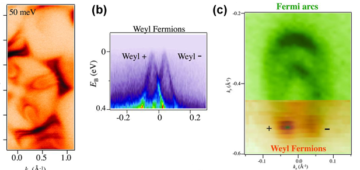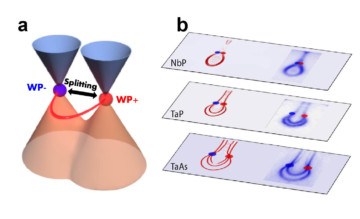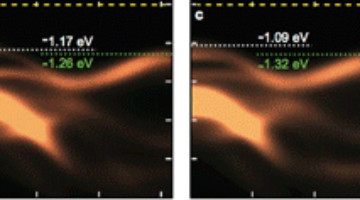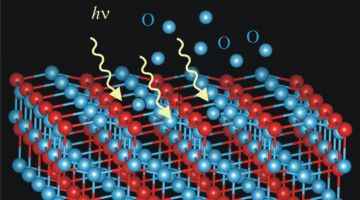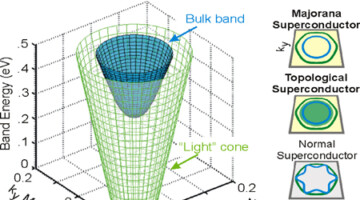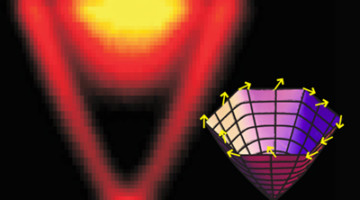Weyl fermions, elusive massless particles first theorized 85 years ago, have now been detected as emergent quasiparticles in synthetic crystals of the semimetal TaAs. The discovery could allow for the nearly free and efficient flow of electricity, as well as the realization of many fascinating topological quantum phenomena.
ALS Work Using ARPES
Angle-resolved photoemission spectroscopy (ARPES) is a technique in which a highly focused beam of x-rays is used to kick electrons out of the sample. By analyzing the ejected electrons' direction and energy, the researchers can obtain the material's band structure—a map of the electrons' behavior in the material.
Discovery of Weyl Semimetals May Lead to Novel Future Spintronic Applications
A team of researchers using angle-resolved photoemission spectroscopy (ARPES) at ALS Beamline 10.0.1 found intriguing particles in a new phase of quantum matter: topological Weyl semimetals.
Read more »
ALS Director’s Update: Reflections on our Past, Present, and Future
We are looking forward to an exciting and productive year at the ALS, with plans for new beamlines and capabilities coming online, and more users taking advantage of our technical and scientific expertise to produce a record number publications. At the ALS, we are encouraged by this year’s funding and are looking for new ways to focus on our core strengths while expanding partnerships to explore new opportunities. Read more »
The Electronic Structure of a Two-Dimensional Pure Copper Oxide Lattice
All superconducting cuprates share a common structure: charge reservoirs stacked between layers of CuO2. An undoped version, including only C and O, is not available in nature. By growing epitaxial films with a pulsed-laser deposition facility, researchers stabilized a 2D version of CuO, which can be thought as composed by two CuO2 planes staggered and superposed.
An Iridate with Fermi Arcs
Researchers have discovered that “Fermi arcs,” much-debated features found in the electronic structure of high-temperature superconducting (HTSC) cuprates, can also be found in an iridate (iridium oxide) compound—strontium iridate. Read more »![]()
![]()
Graphene’s 3D Counterpart
ALS researchers have discovered a material that is essentially a 3D version of graphene — the 2D sheets of carbon through which electrons race at many times the speed at which they move through silicon. The discovery promises exciting new things to come for the high-tech industry, including much faster transistors and far more compact hard drives. Read more »![]()
![]()
Minding the Gap Makes for More Efficient Solar Cells
Using novel materials to develop thin, flexible, and more efficient photovoltaic cells is one of the hottest topics in current materials research. A class of transition metals undergoes a dramatic change that makes them ideal for solar energy applications. Read more »
New Light on a Famous Insulator: Photoinduced Polaronic Conduction in Anatase
Using angle-resolved photoemission spectroscopy (ARPES), researchers have shown that the number of conduction electrons in anatase, as well as their degree of correlation, can be patterned by exposure to UV light in a controllable and reversible way. Read more »
Superconducting Topological Insulators
ARPES studies show that it’s possible to introduce superconductivity into a topological insulator. The resulting novel properties, such as relativistic electrons and quantum memory, may in the future provide the basis for a whole new type of computer.
Read more »![]()
![]()
ALS Reveals New State of Matter
ALS user groups from Princeton and Stanford have been making waves this past year with several high-profile papers and extensive news coverage of their work on a new state of matter embodied by so-called “topological insulators,” materials that conduct electricity only on their surfaces. Read more »![]()
![]()
- « Previous Page
- 1
- …
- 5
- 6
- 7
- 8
- Next Page »
